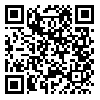BibTeX | RIS | EndNote | Medlars | ProCite | Reference Manager | RefWorks
Send citation to:
URL: http://ijdld.tums.ac.ir/article-1-5400-en.html
Background: One of the serious complications of type 1 diabetes is a sudden increase and drop in blood glucose levels causing risks of anesthesia and coma. Thus, an important step towards the optimal control of the disease is to use intelligent methods with low error rate and available information in order to predict and prevent such complications. In this paper, a combined Fuzzy SARSA algorithm was employed to design an expert system to predict fluctuations in blood glucose levels in patients with type 1 diabetes. The aim of this paper is to propose and implement a new algorithm based on reinforcement learning and fuzzy logic called FSA (Fuzzy SARSA Algorithm) to develop an expert system. Methods: The medical data used in this article were related to 3 Iranian female patients with type 1 diabetes. The data included parameters such as the type and dose of injected insulin and time interval between the hours of recorded blood glucose level and the one at the beginning of the period. A well-known reinforcement learning algorithm called SARSA was implemented with fuzzy logic. The Fuzzy SARSA algorithm was used in an expert system to predict fluctuations in blood glucose levels in patients with type 1 diabetes. Results: The results of the expert system with the proposed FSA algorithm for a learning factor included the parameters of blood glucose level at the beginning of the period (mg/dlit), short-acting injected insulin dose in to the body (unit), long-acting injected insulin dose (unit), stress level (unit), physical activity level (unit), used carbs (gr), and the interval between the beginning and end of the period (hour). They indicated that the factor managed to keep blood glucose levels at 85% in a normal range of 80 to 120, and it had 15% error. The error was observed in cases in which there was no proper exploratory factor for short-acting and long-acting injected insulin. Conclusion: According to the results, it was found that the proposed algorithm for intelligent system, with an approximate reduction of 15% in prediction error, can be used as a good model to predict fluctuations in blood glucose levels in patients with type 1 diabetes in comparison with other conventional methods including the ones based on reinforcement learning. In addition, other prediction methods based on artificial intelligence such as neural networks can be used to predict the results accurately.
Received: 2015/08/19 | Accepted: 2015/08/19 | Published: 2015/08/19
| Rights and permissions | |
 |
This work is licensed under a Creative Commons Attribution-NonCommercial 4.0 International License. |





